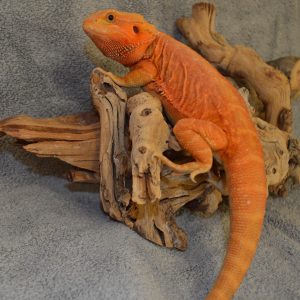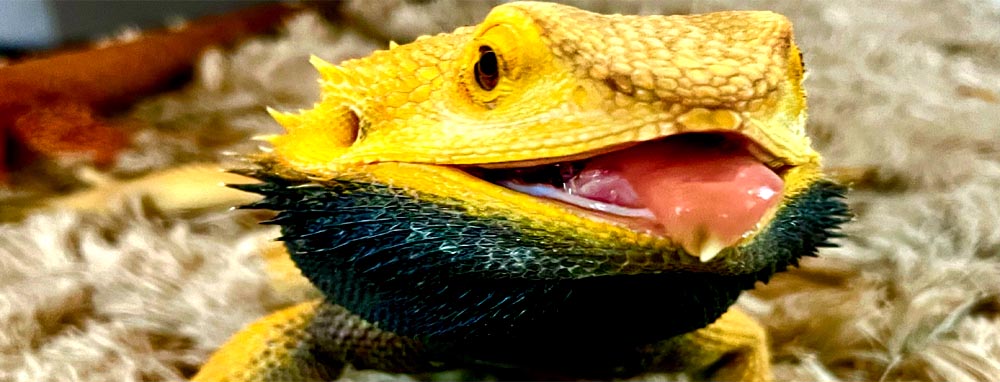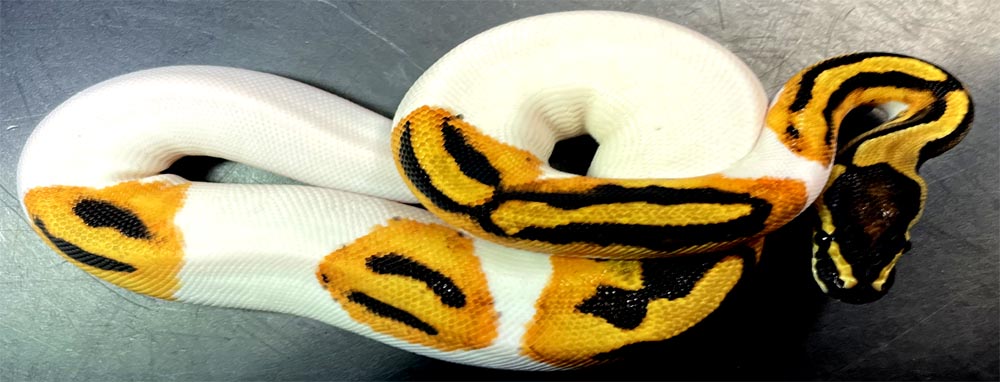
Dragon Care.
Pro tips: helping your new Dragon settle in to their new environment.
-Kolleen Conger, Moab Dragons and Exotics
1- Hatchling dragons look at everything that moves, as a predator and don’t usually start to calm down until about 3 months old. Some take longer.
HANDLING-for the first week to 10 days, only handle your baby if absolutely needed. Let them take this time to get used to your habits, sounds, smells, etc. Once baby is eating well for you, start handling about 5-10 minutes at a time and work your way up. Sit down on the ground or bed and Be sure to keep a slight grip on the tail to ensure baby doesn’t lunge themselves off of you. They can and will jump for it, even completely unprovoked! A fall can seriously injure them so don’t allow them to ride on your shoulder until they are a bit older.
HANDLING OUTDOORS- If you decide to take them outside, please do so in a container to keep them safe until you know your dragon’s outside behaviors. The same dragon can be 100% calm indoors yet 100% crazy outdoors. If you plan on using a dragon harness with them, please start indoors because most of them dislike it at first. You’ll have to consistently put the harness on and work your way up in time. Be certain they can’t get out of it before taking them out! You will need to build a strong foundation with your dragon and over stressing them can be detrimental to their health! The more you work with them, the more fun you’ll have with them.
2- Temperature and proper light cycles matter more than you could imagine. The foundation of your dragons health is centered around proper set-up.
CHOOSING AN ENCLOSURE- there are three options. Tank, Tub and front opening Terrarium. All can be set up just fine. Hatchlings to 4 mos do great in a 20 gal equivalent and after that, 45+gal is recommended. Your dragon doesn’t care if it has cute furniture and fancy stuff, so long as there’s a branch or hammock for the basking spot and a hide. Do they look super cool all set-up fancy?? Well YEAH!! They do like to climb so the more height, the better. The more furniture you put in it though, the more you have to pull out and disinfect each week. Don’t decide against a dragon as a pet if you can’t afford $1000 housing. I find that building your own works best! Feel free to contact me for ideas!! Most of mine are 36 Long X 24 Deep X 18 High or 48x24x18. I also put a removable divider in my 48 inch enclosures to house younger dragons in until they mature a bit. I just do two sets of light fixtures.
HIDES-In the wild, pretty much everything is trying to eat them after they hatch. To make them feel secure and ensure they don’t get stressed they need at least one place in their cage to hide. A half log, a round piece of PVC(I buy 2” pvc “T’s” from the hardware store because they can be put in your dishwasher), a piece of driftwood that they can get underneath and out of the light or one of the many commercially available hides.
LIGHT: Bearded dragons require a decent amount of UVB-A and UVB-B to survive. I won’t get into the science behind it at this time(I’m trying to keep this list kind of short and to the point). The best way to give UV to your reptile at a level that won’t harm him/her, is to purchase a Reptisun T5 10.0 bulb and a fixture. THE COIL BULBS CAN HARM THEIR EYES!! This will provide BOTH types of crucial UV for your new baby. Without UV light and supplements, the animal can and will develop metabolic bone disease and will be disabled for the rest of their lives and or die. Please do a search on metabolic bone disease. If you can, attach the fixture to the inside of the enclosure by hanging it with tie wire or industrial Velcro. 10 minutes outdoors, when temps are appropriate, once a week for natural UV light will only aid in your dragons health. Use care on hot days though. THEY CAN AND WILL OVERHEAT!! Please, do NOT take your reptiles outdoors in the winter time. It doesn’t matter how bundled up you have them, the freezing cold air can hurt their lungs and cause respiratory infections.
HEAT: Dragons need a SEPARATE bulb to provide warmth. Please do not use colored bulbs, they do not work well and can disturb your dragons, especially at night. Remember, we are mimicking the sun. I choose 38W GE compact flood halogen lights with a lamp dimmer switch so you can properly set up their daytime basking spot. Hatchlings need one place in their enclosure(one end or the other, not at center) that the surface temperature reaches about 105-110 degrees with 78-80 degrees on the cool side to allow a gradient for thermoregulation. Dragons 10 mos and older, about 95-100 with 78-80 on the cool side. I check the temperature with a digital infrared temperature gun. They can be picked up online for about $25-$35 and up.
For nighttime, a room temperature of 72 to 77° is OK, but if it gets any colder than that you’re gonna have to supplement with a nighttime heat source such as a room heater or a ceramic heat emitter. ***CHECK TEMPS OFTEN TO ENSURE THEY STAY WHERE THEY ARE NEEDED.
DAYTIME LIGHT CYCLE: To get enough UV for optimum health, it is suggested you put your dragons lights on a timer. The recommended light cycle is 12-14 hours on and 10-12 off. Dragons sleep every night and most don’t do well with change, so unless you’ll be disciplined enough to turn the on and off by hand at the same time every day, go ahead and spend the $10 on a basic one. Complete lifesaver! Buy a second one for their nighttime heat if necessary.
Dragonhaus.com for caging
3- FOOD: from hatchling up to 6-8 months old, 80% protein/20% greens. Feed as many bugs as they can eat, twice a day. Offer mixed dark greens and veggies, once a day, in the mornings, to ensure that they have them to munch on throughout the day. These greens include: collard greens, mustard greens, arugula, endive, cilantro, turnup greens. Veggies: sweet bell pepper, butternut squash, carrot(only once a week), Broccoli. There are many more that you can choose, those are the ones that I feel the dragons like the most. Every animal is an individual and will like/dislike certain things. Variety is key. The better the variety you feed them at a young age, the better they eat as an adult and the healthier they will be.
After 8 months old , 80% greens/20% protein. they get offered their greens once a day, and a big bowl of bugs twice a week for one meal. Have fun with their food. Feed them treats outside of their enclosure. Get them to work and hunt. It’s great enrichment for them.
List of appropriate Feeders: dubia roaches, black soldier fly larva, super worms, meal worms, crickets, hornworms. I mainly feed Dubia roaches and super worms. Be sure that the bug is no wider than the space between the animals eyes to ensure they do not choke or regurgitate. They can eat a lot more than you can imagine they’ll eat… it is pretty wild how much food they can put down.
Do you research on how to keep/store these foods. Once a week I make a big Tupperware full of chopped veggies and they are greens, this keeps it as an easy access thing in the mornings to just grab a handful out of the tub and put it on a plate for them. I teach all of my hatchlings to eat out of a bowl, so purchase an escape proof feeder dish of appropriate size.
4- SUPPLEMENTS***
It is very very important that along with the UVB Lighting, that we offer a calcium supplement/vitamin supplement. The best one for you to have, and all in one supplement, Repashy calcium plus. I believe you can get it from chewy, if not look on Amazon. Best place to buy Feeders is dubiaroach.com and they have a scape proof feeder dishes as well.
I hope this has been informative. If you have any questions at all, please message me on Instagram. @Moab_dragons_and_exotics




